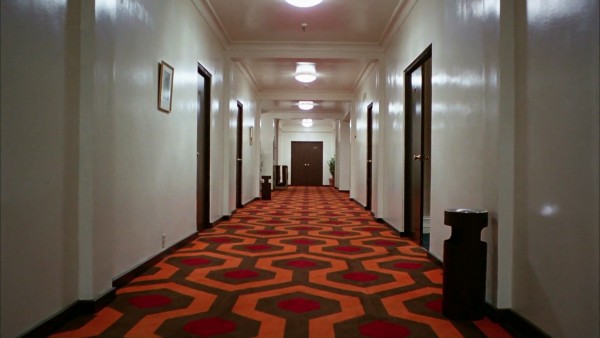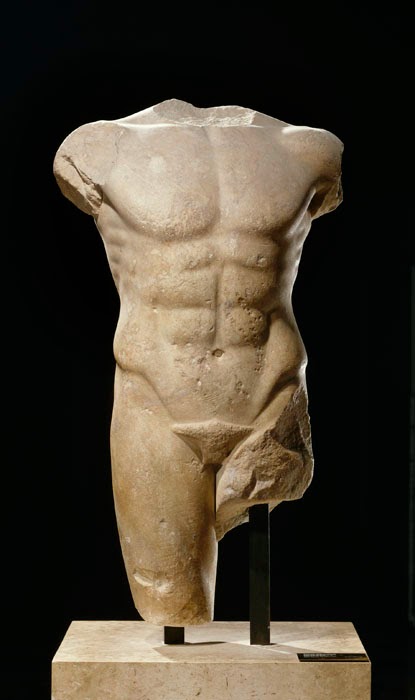The Reality Contract: Rope, Birdman, and the Economy of the Single-Shot Film
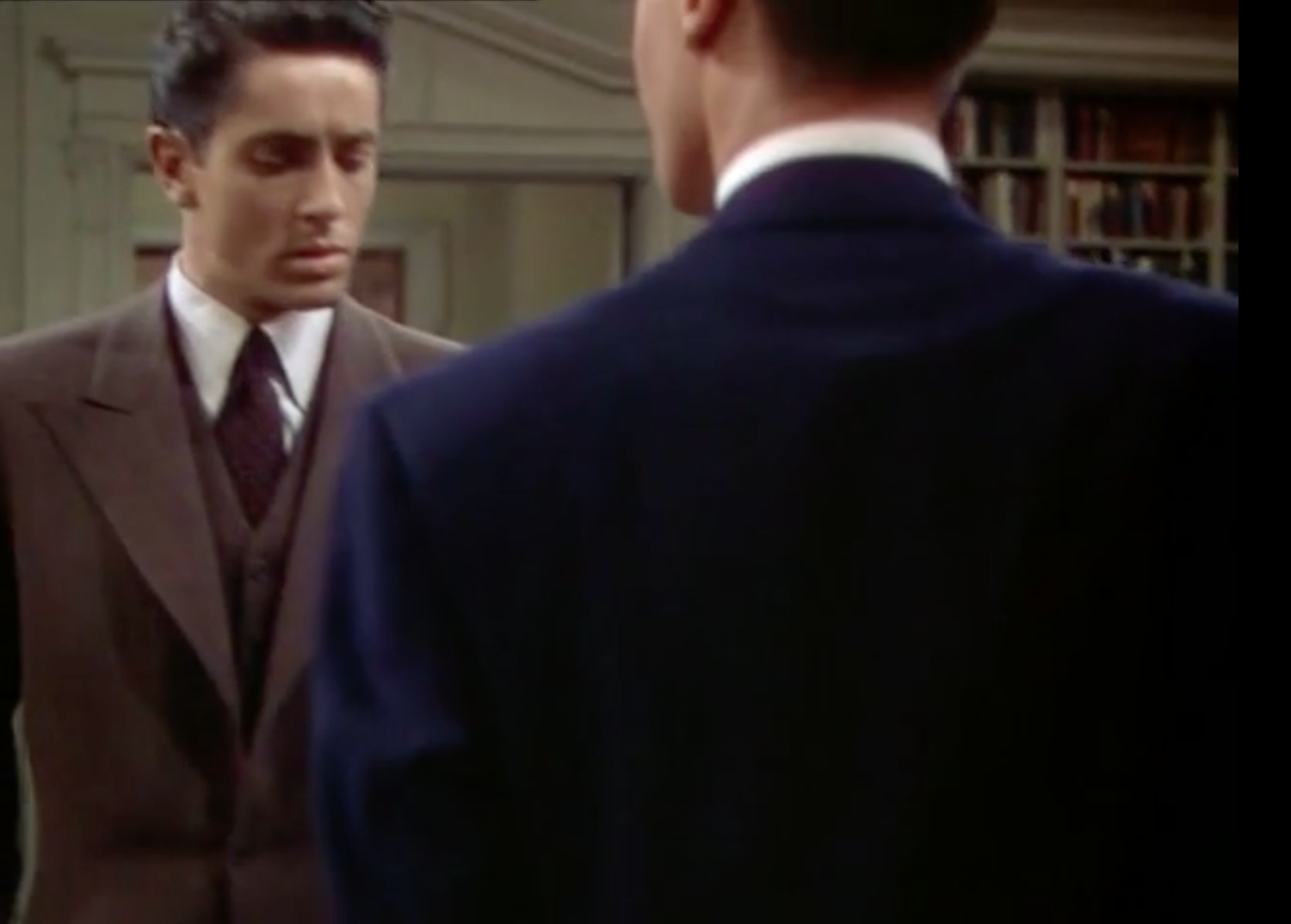
When courting potential investors, film producers will attach a list of “risk factors” to their financial prospectus, often accompanied by the following, or some equally precautionary, disclosure:
Purchase of the stock involves a high degree of risk as it is impossible to forecast accurately the results to an investor from an investment in the film, since no one can predict with any certainty whether and to what extent entertainment-related (including motion picture) investments will be successful. Investment in the stock is suitable only for persons of substantial means who have no need for immediate liquidity.1
A film’s “stock,” no less combustible than nitrate, is a notoriously risky investment—one shared by a host of financial agents and industries, including banks, distributors, production houses, and risk-taking “persons of substantial means.” Perhaps not surprisingly, the history of Hollywood production mirrors the history of venture capital in the United States, as each new film presents an idiosyncratic set of risk factors, and each new production or distribution technology distorts return forecasts for a new generation of film speculators. Financiers, however, are not the industry’s only risk takers; rather, every film production erects a new theater of risk for aesthetic gain. A conventional connection between certain forms of risk and artistic merit has crystalized into cliché—an actor’s extreme weight loss or gain, for example, is said to guarantee her an Oscar nomination—but to what extent can one generalize that correlation? In “The Virtues and Limitations of Montage” (1953), Andre Bazin formalizes a “law of aesthetics” around the maximization of risk in front of the camera lens.2 Bazin’s “law” forbids a film cut to mask the risks posed to a pro-filmic subject. Uniting the aesthetic and financial imperatives of filmmaking in a paean to high risk and return, Bazin legislates the terms of “forbidden montage” or montage interdit. He writes, “When the essence of a scene demands the simultaneous presence of two or more factors in the action, montage is ruled out.”3
Bazin illustrates the proper deference to this law with two examples taken from a British and American film—Where No Vultures Fly (1951) and Charlie Chaplin’s The Circus (1928)—both of which, not irrelevantly, entail potentially fatal, bodily risk for the pro-filmic subject. In the first of his examples, Bazin describes a scene between a young child and a lioness. The child encounters a seemingly lost cub, while the cub’s mother approaches menacingly from behind.
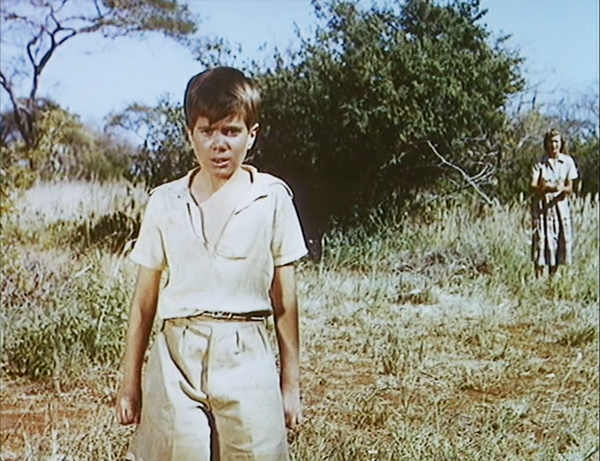

![Figure 3 Figs. 1-3: In “The Virtues and the Limits of Montage” Bazin analyzes this scene in Where No Vultures Fly (1951), in which a young child encounters a seemingly lost cub, while the cub’s mother approaches menacingly from behind. As Bazin describes it, “Up to this point everything has been shown in parallel montage [Figs. 1-2] and the somewhat naive attempt at suspense has been quite conven-tional.” However, in Fig. 3, “suddenly, to our horror, the director abandons his montage of separate shots that has kept the protagonists apart and gives us instead parents, child, and lioness all in the same full shot.” At this point, “trickery is out of the question, ” and the shot thus “gives immediate and retroactive authenticity to the very banal montage that has preceded it.”](https://nonsite.org/wp-content/uploads/2017/08/Shechtman-Fig-3-600x463.png)
Figs. 1-3: In “The Virtues and the Limits of Montage” Bazin analyzes this scene in Where No Vultures Fly (1951), in which a young child encounters a seemingly lost cub, while the cub’s mother approaches menacingly from behind. As Bazin describes it, “Up to this point everything has been shown in parallel montage [Figs. 1-2] and the somewhat naive attempt at suspense has been quite conven-tional.” However, in Fig. 3, “suddenly, to our horror, the director abandons his montage of separate shots that has kept the protagonists apart and gives us instead parents, child, and lioness all in the same full shot” (50).
The two “factors” (the child and the lioness) are contained in the same frame, and, as Bazin explains:
This single frame in which trickery is out of the question gives immediate and retroactive authenticity to the very banal montage that has preceded it … It is obvious that, considered from the point of view of a recital, this sequence would have had the same simple meaning if it had been shot entirely in montage or by process work. But in neither event would the scene have unfolded before the camera in its physical and spatial reality.4
Cinematic realism, in these terms, resides in the homogeneity of space and time captured in the single long-take. The same holds for Bazin’s second example, in which Chaplin is unwittingly encaged with a sleeping lion, which he awakens with his typical fumbling and bumbling. Had the scene been merely a shot-reverse-shot sequence of a) Chaplin appearing scared (Fig. 4) and b) shots of the lion sleeping (Fig. 5), it would have involved less risk for Chaplin as an actor: the shots could have been film at entirely different times—even different days. But it also would have contained less aesthetic and comedic impact than the single long take of Chaplin actually standing near the sleeping lion (Fig. 6). The cage becomes a space of comedy because of what Bazin called the “comedy of space”: the scene’s uninterrupted duration of time and unity of space provide a suitable platform for the high risks of humor.5
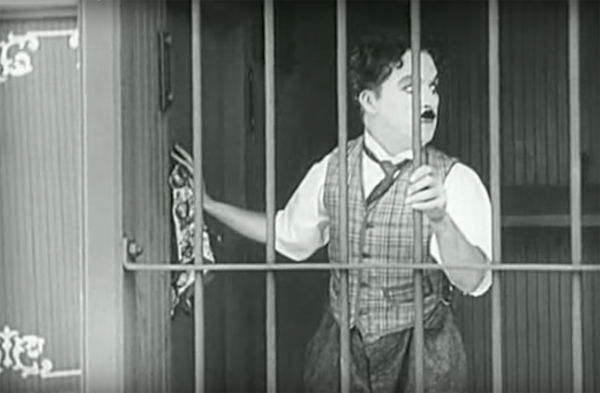
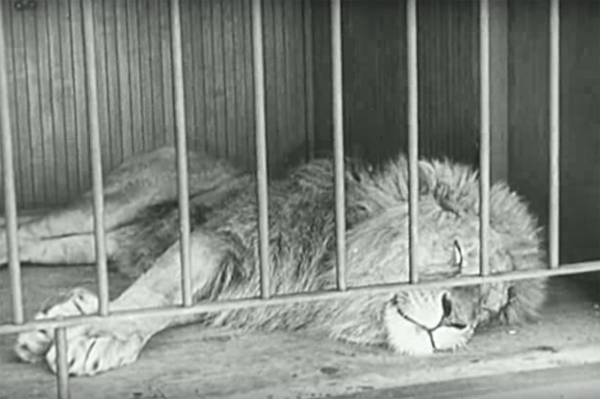
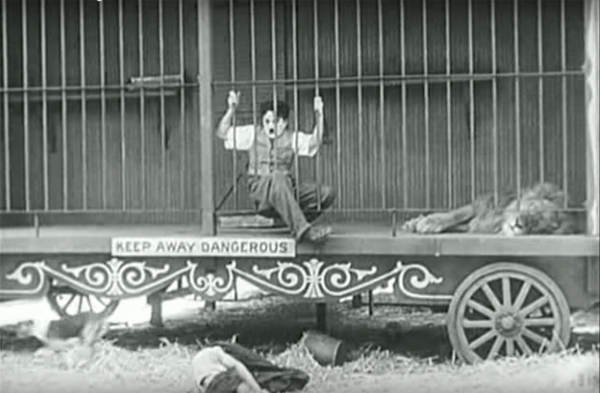
Figs. 4-6: According to Bazin, in Chaplin’s The Circus (1928), individual takes of Chaplin and the Lion (Figs. 4-5) are given greater comedic and aesthetic power by longer takes of Chaplin actually in the presence of the lion (Fig. 6).
In both of these examples, the rolling camera serves to underwrite the risks of the films’ diegetic action. It provides credit to the events on screen, acting as a third-party guarantor to what we might call the “reality contract” that a viewer tacitly signs by believing in the unbelievable (and immaterial) film projection. To have reworked these scenes through montage, here defined as a form of “trickery,” would violate this contract: it would have betrayed the authenticity of the scenes’ risks. The odd thing about the terms of Bazin’s reality contract, however, is that “trickery” in front of the rolling camera is not deemed a violation of cinematic realism: “If the film is to fulfill itself aesthetically,” he argues, “we need to believe in the reality of what is happening while knowing it to be tricked.”6 There’s no aesthetic dilemma, for example, if in a scene with a horse “someone had to pull on a cotton thread to get the horse to turn its head at the right moment.”7 Such a gimmick is trickery—perhaps even a form of theatrical deception—but not an aesthetic error: “All that matters is that the spectator can say at one and the same time that the basic material of the film is authentic while the film is also truly cinema.”8 In other words, the aesthetic risks relevant to the film critic must inhere in film’s celluloid materiality—in a continuity of action and indexical transfer from the diegetic scene to the camera’s rolling film. In these terms, realism and risk are understood as correlative endeavors in the search for a kind of cinematic presence. Bazin aligns the business of the production studio with his ontology of cinema—a film’s “stock” and “film stock”—in a celebration of high risk and return.
But the history of risk under capitalism is also a history of risk management: the development of sophisticated mediating techniques to conceal and ameliorate risky assets. For Bazin, the cinematic cut serves as a technique of this order. Implicit in Bazin’s reality contract, dictating when and where montage is interdit, is a theory of the cut as a form of cinematic risk management. Technological mediation through film cuts interrupts the pro-filmic action, minimizing a scene’s risks and compromising its authenticity. Montage, in these terms, becomes “that abstract creator of meaning which preserves the state of unreality demanded by the spectacle.”9 Bazin’s “faith in reality,” as he himself described it, stems from his quasi-mystical faith in the indexical relationship between cinematic sign and referent—the having been there testimony of the film apparatus to the pro-filmic scene.10 With his doctrine of realism and aesthetic value firmly rooted in the identity of index and referent—“The photographic image is the object itself, the object freed from the conditions of time and space which govern it”11—the mediating technique of montage is treated as an impious violation of the ontology of the film image.
But what if montage could both preserve the appearance of realism in Bazinian terms, and nonetheless minimize realism’s risk through mediation? What if, in other words, a filmmaker could somehow hide the montage—act, that is, as both financier, courting the risks of realism, and insurance agent, mitigating them through undetectable edits? These roles, financier and insurance agent, represent the antinomies of risk subtending financial markets. But if these are roles also performed by every filmmaker in negotiating the risk factors of production, two Hollywood productions in particular intensify this logic of filmmaking by preserving the illusion of a 90-minute single-take through quasi-transparent editing. Both Rope (1948) and Birdman or (the Unexpected Virtue of Ignorance) (2014) capitalize on cinema’s ability to underwrite the risks of cinematic realism through techniques of illusionism—the very same techniques of abstraction and mediation that conceal and ameliorate the risks of capitalism. Indeed, through their respectively analog and digital “trickery,” Rope and Birdman manifest an evolving correlation between risk management and realism in their film forms. The historical transition from the extra-long takes of Rope to those of Birdman can even be seen to allegorize the evolving dynamic of risk management under finance capitalism.
A Theater of Risk
Clarifying his faith in the uninterrupted long-take’s aesthetic value, Bazin refines his definition of montage interdit, writing, “It is in no sense a question of being obliged to revert to a single-shot sequence or of giving up resourceful ways of expressing things or convenient ways of varying shots. Our concern here is … with the interdependence of nature and form.”12 As an example, Bazin concludes that Hitchcock’s Rope “could just as well have been cut in the classic way whatever artistic importance may be correctly attached to the way [Hitchcock] actually handled it.”13 In other words, Rope’s semblance of a single-take (actually a cut-and-paste job of 11 shots) was merely a stylistic departure. It “in no essential way altered [the film’s] subject matter”; nor did it augment its realism.14 Hitchcock echoed Bazin’s dismissal of Rope, retrospectively deeming the film a “stunt” and a “crazy idea.”15 But the gimmicky quality of Rope’s single-take illusion in no way disavows its paradoxical investment, both thematic and formal, in risk-seeking and risk management.16
With the exception of its opening shot (and only conspicuous cut), Rope is set entirely in the Upper West side apartment of Brandon (John Dahl) and Phillip (Farley Granger). Obeying the Aristotelian tenet of drama’s unity of time and space—and never exposing its theatrical fourth wall—the film turns Brandon and Philip’s apartment-space into a stage. This drama is a thriller, in which the two aesthetes strangle their prep-school peer, David Kentley, within the film’s first minutes. The murder, one soon learns, is a cold-blooded killing, a consummation of Brandon and Phillip’s Nietzschean Blonde Beast prowess. Their crime drips with homoerotic innuendo: David’s asphyxiated corpse collapses into Brandon and Phillip’s arms as if he swoons; the murderers culminate their act with heavy breathing, ecstatic reflections (“I felt tremendously exhilarated”) and the obligatory post-coital cigarette before interring their victim in a chest-cum-casket. The theatrics of their crime are spectacular, as the couple invites the victim’s father, girlfriend, aunt, and prep-school mentor Rupert Cadell (Jimmy Stewart) to dine with them on top of David’s still-warm corpse. Their chest/grave becomes a dinner buffet, as they solicit an audience (in addition to the film viewer) to witness their barbaric drama. They heighten the risks of their crime for the sheer thrill of performance—to make of their murder a “masterpiece.”
Ultimately, their masterpiece and their risks are overshadowed by Hitchcock’s own: his meticulous handling of cinematic decoupage and editing that make Rope appear to be 80-minutes of real time in Brandon and Phillip’s apartment. Hitchcock famously masked the cuts of the film—suturing together the 11 film takes, each of which lasts between three and nine minutes—often by focusing on a dark object (the back of Brandon’s suit or the lid of the chest; see figs. 7-9), which allowed for a momentary blackout, so that the camera could be reloaded or refocused.
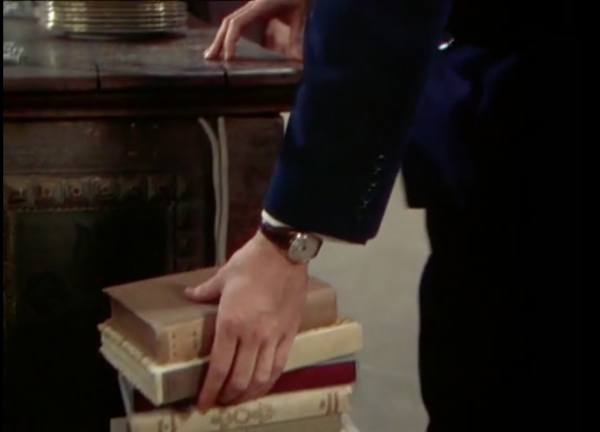
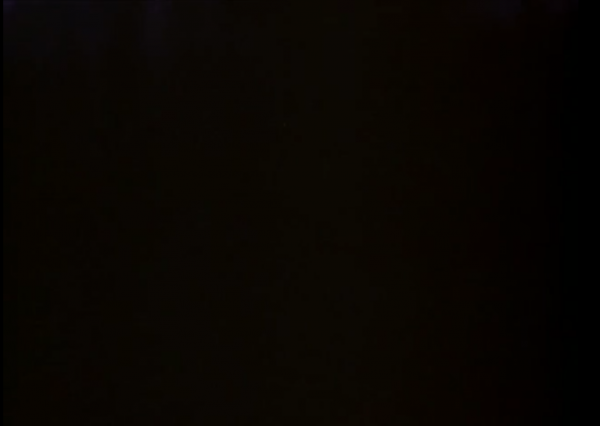
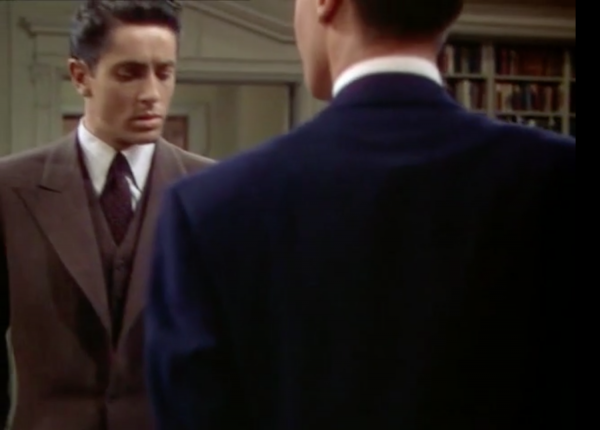
Figs. 7-9: Hitchcock famously masked the 11 cuts in Rope (1948) by focusing on a dark object, allowing for a momentary blackout. Here the camera pans toward the back of Brandon’s suit, cuts, and then pans back up over his shoulder.
As a number of scholars have argued, the final film product—a semblance of Brandon and Phillip’s crime in real-time—offers the viewer a sensation of “presence” conventionally impeded by montage in cinema.17 That such a sense of presence could emerge from within cinema at all would have shocked Georg Lukács, who, comparing the then-nascent cinematic medium to theater in 1913, wrote that “the stage is absolute presence, [but] the absence of ‘presence’ is the essential characteristic of the ‘cinema.’”18 He continued, “In a word: the basic law of connection for stage and drama is inexorable necessity; for the ‘cinema,’ its possibility is restricted by nothing … ‘Everything is possible’: that is the worldview of the ‘cinema.’”19 In Rope, however, Hitchcock imposes artificial limits on the cinema’s “endless possibilities.” He imposes the limits of theater. Rope’s camera never probes the perspective of the film’s protagonists (one never gets into Brandon or Phillip’s eyes); rather, Rope’s single, mobile camera assumes one unidentified point-of-view. It becomes an anonymous witness to Phillip and Brandon’s crime and the perverted dinner party that follows. In this sense, the film functions as a subjective long-take, but seemingly without a subject. Like theater-viewers, one sees only what this limited camera-witness sees, peering into the kitchen and overhearing a conversation in the next room. There is no reverse-shot that would attribute this 80-minute visual “quote” to a character because, as in theater, the viewer is it.20
This mode of filmmaking—and the phenomenology of presence that it ostensibly compels for actors and viewers alike—anticipates Bazin’s remarks about the ontology of live television, which he wrote in 1954. For Bazin, the live-ness of live television (then the dominant mode of broadcast) offered the medium “a particular way of dealing with action: more freely than theater, but less varied than cinema. These limits are naturally defined by the technology of live broadcast, which can safely do more than theater but less than cinema … such unity in variety is especially appropriate for the TV viewer, who ends up considering himself an invisible extra tenant.”21 But live television (like theater and a single-take celluloid film) is also prone to error. That is its risk—again, the curiously determinative factor for Bazin and his contract with the real.
One could even understand the scholarly tendency to focus on Rope’s “mistakes” as evidence of Hitchcock’s already-Bazinian investment in a risk-and-reward relationship to the aesthetics of realism and presence—as well as other cultural dynamics. The errors in Rope, for instance, have been well documented, even fetishized, by the film’s “closest” viewer, D.A. Miller. In his 2013 essay “Hitchcock’s Understyle: A Too-Close View of Rope,” Miller unearths all the film’s glitches, which span from continuity errors (a chair that just happened to turn to face the camera, while it was focused on another side of the room) to performance errors (a candle that cants to one side, tottering on its candlestick, until John Dahl turns in time to place it firmly in its socket). For Miller, these errors are not so much mistakes as “mis-takes,” foregrounding a “fault that lies, primal and irreparable, at the core of [Hitchcock’s] art.”22 The risk of the mis-take permeates Rope—it tinges each performance with an “unacted nervousness that spikes through the script’s overliterate finish.”23 It is in this sense that the film collapses its multivalent risks (the risk of murder, the risk of theater, and above all, the risk of homosexuality in 1948) into the risk of the film’s form itself.24 According to Miller, then, Rope’s virtuosic, if imperfect, illusion of a single-take upstages its diegetic risks, thus serving as a form of cinematic risk management (only what gets “managed” is a cultural dynamic too risqué for Hitchcock’s late-1940’s audience).
The Risks of Super-Realism
In nearly every review, Birdman was compared to Rope, as its form also trumped its content in the critical aftermath of its release. Birdman swept the 2015 Academy Awards, winning Best Picture, Best Original Screenplay, and Best Director for Alejandro González Iñárritu and Best Cinematography for Emmanuel Lubezki. Unusual for a blockbuster, Birdman’s camerawork received most of its critical attention and accolades in the weeks between the film’s release and its Oscars success. Manohla Dargis of the New York Times called the film’s cinematography “an astonishment”; David Edelstein of New York magazine deemed it “the very definition of a tour de force”; and Slate’s Dana Stevens called Lubezki’s roving camera “one of the most intelligent and vibrant presences on screen.”25 Shot to appear as a single, continuous take, the film’s camerawork weaves the viewer in and out of a dizzying, meticulously-choreographed visual maze: in and out of the dressing rooms, stage, wings, and hallways of Broadway’s St. James Theater, where most of the film takes place. Birdman’s actual composition has been dissected and documented by a number of film fans and reviewers, who have exposed the magic trick of the film, which was actually shot in a series of long-takes, digitally composited into a single, seamless narrative in post-production.26
Where Rope took Brandon and Phillip’s apartment as its stage with theatrical realism as its aspirational aesthetic, Birdman is set on an actual stage with theatrical realism serving as its stylistic and thematic foil. The film follows Riggan Thomson (Michael Keaton), an aging movie star made both obsolete and conspicuous by his former portrayal of the superhero Birdman. On a quest for artistic legitimacy and media attention, Riggan uses his own money (and mortgages his second home) to fund, direct and star in a Broadway adaptation of Raymond Carver’s “What We Talk About When We Talk About Love.” Riggan’s financial and emotional risks are the film’s obsessive theme: “You risk nothing, nothing, nothing. But I’m a fucking actor. This play cost me everything,” he says to a fictional New York Times theater critic, who has promised to pan his upcoming Broadway debut out of personal spite for the Hollywood blockbuster star-turned-dramatist and the commercialization of Broadway that he represents. Her claim is to artistic integrity; she cares nothing for his risks, daring not even to flinch as he smashes a tumbler against the wall of the bar in which they sit.
Carver’s “dirty realism” (and Flaubert, whom Riggan off-handedly quotes to bolster his cultural capital) stands-in for realism as an aesthetic mode, and as an anachronism: realism is as out of touch with the 21st-century mediascape as the aging film star himself. Curiously, Carver’s realism is represented in the film as an epistemology in line with what we have already described as Bazinian realism: a naïve, or literalist, faith in the transparency of representations. But the existentially and financially destitute actor can’t even get this naïve realism right. Mike Shiner (Norton), an acclaimed Broadway method actor and Riggan’s costar on stage, relishes deflating Riggan’s posturing attempts at authenticity. Drinking real gin on stage on the night of the play’s first preview, Mike explodes when Riggan swaps it with the water that the actor had used in rehearsals:
Oh, shit. I am so tired of this. Is this water? Did you replace my gin with water, man? [smashes glass]. No, come on what? I’m drunk? I’m supposed to be drunk! Why aren’t you drunk? This is Carver! He left a piece of his liver on the table every time he wrote a page. If I need to be drinking gin, who the fuck are you to touch my gin?
When the audience jeers, taking out cellphones to record his on-stage tantrum (Fig. 10), Mike turns his fury on them: “Oh, come on people. Don’t be so pathetic. Stop looking at the world through your cell phone screens. Have a real experience. Does anybody give a shit about the truth here besides me?”
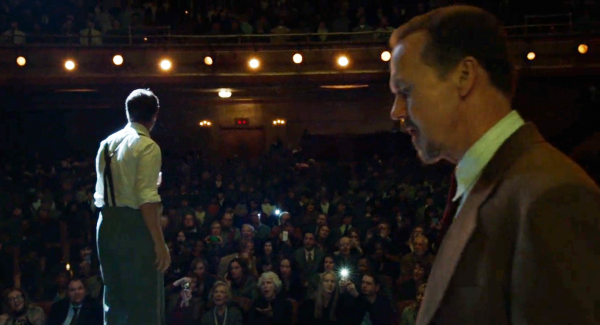
When Mike Shiner (Ed Norton) melts down on stage because his gin has been replaced with water, the audience begins jeering and takes out cell phones to record his tantrum.
So turned on by theater’s reality effect Mike produces a real “massive erection” in the next night’s preview during his on-stage sex scene. Again, the audience’s cellphones appear to capture—and filter—the softcore moment of hardness.
But if the audience cannot sustain these moments of Mike’s so-called realness without whipping out their pocket recording devices, the film proves an even more precarious platform for realism, exploiting the surreal capacity of digital filmmaking from the very start of its “single-take.” After a string of opening credits, the film presents a quote from Raymond Carver’s Late Fragment: “To call myself beloved, to feel myself beloved on the Earth.” A quick cut to a jellyfish washed up on the shore (so quick it appears like a pornographic snippet stuck into a celluloid print) precedes another cut to Riggan, seen from behind in his dressing room, levitating feet above the ground in a yogic lotus position (fig. 11).
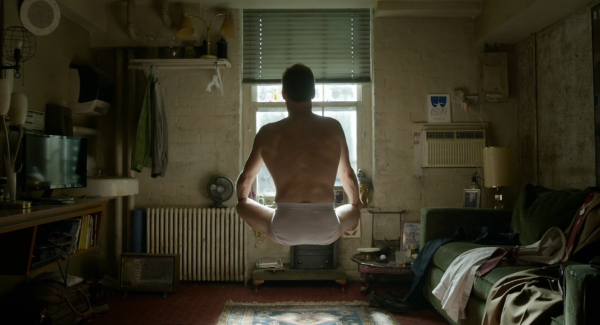
After the opening credits, and just prior to the beginning of the “single take” that will constitute the majority of the film, Riggan is seen from behind in his dressing room, levitating feet above the ground in a yogic lotus position.
Riggan drops to the ground, and the camera tours his disheveled dressing room. For the next 105 minutes, the film will appear as a single-take, despite traversing time and space—and defying the presuppositions of classical drama and human phenomenology in its wake. Another quote from Carver is mounted on Riggan’s mirror: “A thing is a thing, not what is said of that thing.” Like its former, this quote foregrounds the insurmountable distance between signifier and signified, while nonetheless espousing a “faith in reality”—a manifesto for naïve realism and authentic encounters with the real. We seem to be not far, in fact, from Bazin’s insistence that “the photographic image is the object itself.”
In contradistinction to this manifesto and to the tenets of Bazinian realism, Lubezki’s roving camera turns the St. James Theater and the streets outside it into a cinematic hyperspace: inconceivable, unmappable, and yet connected through the film’s digitally composited continuity. An exemplary moment of this continually inconsistent space occurs when Riggan and Mike leave the theater after their first disastrous preview. The camera tracks backward as Mike and Riggan walk toward it. Riggan drops change into a busking drummer’s can, and the camera swings past the drummer, picking up Riggan and Mike from behind, as they continue their conversation. They are now, however, on 47th street, the location of the Rum House, a bar that the two men enter to get a much-deserved drink. Despite the 3-block leap in space, the thread of their conversation and the drummer’s beat remain consistent, reinforcing the illusion that the entire interaction took place in a unified space and time. While this space-traveling interaction could be conceived as a barely-there continuity error (or a “cheat”), Iñárritu suggested otherwise, when, in a post-production New York Times interview he confessed:
What I wanted to achieve, and the bet for me, and the success for me, it was meant to be an extension of the emotional state of the character, to sustain the emotion, the flow, the internal rhythm, the point of view. When I do films in a conventional way, I do a lot of shit that I’m embarrassed to show. I just take it out. In this case my shit will be out there forever… But I knew that if we do it right, if I’m successful with it, I knew that means I have the audience in the mind of this character. [He] is living a dual reality, and the one he escaped through his mind — I said the only way to do that is putting the audience into that mind.27
The film’s form—the “bet” that Iñárritu took with his single-take artifice—can here be seen as a type of “surreality testing”: not differentiating between an external reality and an internal imagination (as one does in Freudian “reality testing”), but conflating and confounding the two.28 The surreal impossibility of Birdman’s space, which is emphasized in the film’s publicity interviews, is also embedded into the mise-en-scène of the St. James Theater itself. A tracking shot through one of the theater’s many hallways features a patterned carpet that bears considerable resemblance to that of The Shining‘s Overlook Hotel: another famously, and literally, maze-like cinematic space, whose setting reflects a conflation of internal and external realities (figs. 12 and 13).
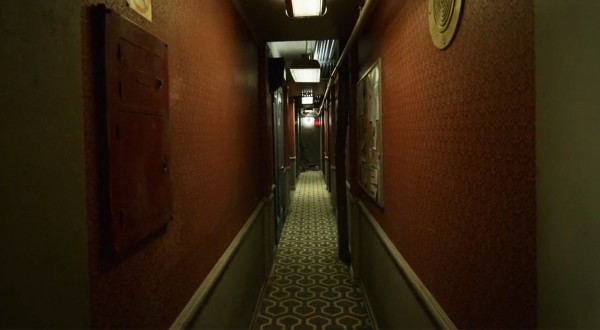
Unlike the film’s single-take illusion, montage-based editing would belie the lack of insurance (emotional and financial) at the heart of Birdman’s diegesis. Iñárritu’s long-take technique not only transferred the precarity of Riggan’s emotional state to the viewer, it also infused the film’s set with an atmosphere of precarity—turning its actors into tightrope performers, high-risk artists.29 In their respective NPR interviews while promoting the film, Birdman’s stars, Michael Keaton and Edward Norton, emphasized the emotional risk to the actor implied by Iñárritu’s “bet”:
Everybody showed up every morning frightened. The crew too. I think we were all thinking, I don’t want to be the guy who lets everybody down. Anything—a misremembered line, an extra step taken, a camera operator stumbling on a stair or veering off course or out of focus—could blow a take, rendering the first several minutes unusable even if they had been perfect.30
Norton added, of Iñárritu and Lubezki:
It was like watching two masters, you know, paint together. And I think it’s hard for people who don’t make movies to grasp, like, how risky that was … For them, [they were] taking away the entire insurance package of editing later … The reason you shoot coverage … is because you want to have the opportunity to manipulate it later and salvage something if it’s not working. And [they] essentially threw all that optionality out the window when [they] made this film, which is quite a dangerous thing to do.31
For Norton, Iñárritu is like the financier, leveraging risk for future aesthetic return. Critically, however, Iñárritu dispensed with the “insurance package” of conventional editing only to subscribe to another form of insurance: digital composition and the apparently infinite “optionality” of pixilated images. His film may contain few cuts, but it is nonetheless highly edited. With digital images, like those captured on Lubezki’s Arri Alexa and Alex M digital cameras, each image is translated into rows of pixels that are coded and stored in computer memory.32 As individual units they may then be subjected to manipulation with the appropriate software. This is how Riggan hovers above his dressing room cross-legged and leaps from 44th to 47th without taking a step. In this sense, the “cuts” in Birdman are not “repressed” as they are in Rope. They are, rather, amalgamated and concealed through compositing. They are decomposed and recomposed into new bundled images. Like the fictional Riggan, digital editing of this sophistication has been most famously used in action films and superhero movies to defy gravity and transcend the limits of the Real. This is not realism but Super-Realism.
Indeed, it is Super-Realism (and not surrealism) that defines Birdman formally and thematically. The new genre is coined by the film’s aforementioned theater critic in her review of Riggan’s Carver adaptation. Falling deeper into the trough of his depression (and floating higher into nostalgic reverence for his days of Birdman-fame), Riggan enters the final, suicidal scene of his opening night production armed with a real pistol instead of the red-dye spouting prop that he had used in previews (a death-driven nod to Mike’s real gin and real erection). The camera trails him from behind as he stumbles downstage, holds the gun up to his head, and pulls the trigger. He falls, and the camera stays steadily on the audience, who, after a moment of shocked silence, erupts in cheers. This is not the end of the film; nor is it the end of Riggan’s life (he missed his brains for his “beak”). But it is the end of the film’s “single-take.” After a satirically dense montage of serene woodlands, plummeting comets, and washed up jellyfish, the viewer is placed in Riggan’s hospital room, where he hears of his rave, if backhanded, New York Times review:
Thomson has unwittingly given birth to a new form, which can only be described as Super-Realism. Blood was spilled both literally and metaphorically by actors and audience alike. Real blood. The blood that has been sorely missing from the veins of the American theater.
The review’s headline is Birdman’s parenthetical subtitle: The Unexpected Virtue of Ignorance.
Toggling between the literal and the metaphorical—between the thing (“real blood”) and what is said of the thing—Birdman’s fictional theater critic defines the scope of Riggan’s Super-Realism in allegorical terms. But Riggan’s high-risk stage performance presents viewers with an allegory of more than the gutlessness of contemporary American theater. Indeed, it is not just ignorance that is unexpectedly lauded in Riggan’s performance; it is risk— high risk—and the singularity of his performance. These are the combined values of 21st-century celebrity: inimitable acts like Riggan’s are what gets one trending on Twitter or featured on a “reality” show (both subtheme’s of Riggan’s failed career). They are also, relatedly, evidence of a radical transformation in the reality contract that has emerged in the digital era—for both film and finance.
The Economy of the Single-Shot Film
If the terms of Bazin’s 1953 reality contract were contingent upon both the indexicality of celluloid—the “basic material of the film”—and an assumed exposure to risk, what has happened to cinematic realism in the wake of digitization? To defend realism in digital cinema, scholars have alternately abandoned indexicality as a necessary condition for realism, or doubled down on it—both positions that compromise the terms and intent of Bazin’s contract. Stephen Prince, for example, famously redefined cinematic realism as “perceptual realism,” an aesthetic that can be reproduced in analog or digital media.33 Prince writes, “A perceptually realistic image is one which structurally corresponds to the viewer’s audiovisual experience of three-dimensional space. Perceptually realistic images correspond to this experience because film-makers build them to do so.”34 Defining realism in terms of recognizability—does it appear real?—Prince renders the ontology (and indexicality) of images irrelevant to the criteria of realism. By contrast, the appearance of reality—a cognitive, audiovisual process for Prince—is, for Martin Lefebvre and Marc Furstenau a semiotic process, still essentially connected to indexicality. Recovering from Peircean semiotics a definition of indexicality that is not dependent on the co-presence of the camera and the pro-filmic subject (the basic elements of realism for Bazin), Lefebvre and Furstenau claim to discover a Bazinian realism that transcends analog filmic production. They remind the reader that “indexicality is simply how signs indicate what it is that they are about” and that “through indexicality signs denote objects of experience to which they are really connected, i.e. real, existing things.”35 In short, they conclude:
All signs, including digital images and cinematic fictions should they mean anything, are to be understood ultimately as (among other things) indexically connected to reality. This is how signs begin to fulfill their epistemological role of ensuring the intelligibility of the “entire Universe of being.”36
By returning to a Peircean definition of indexicality, however, Lefebvre and Furstenau evacuate realism of the metaphysical sensation of presence that Bazin saw as cinema’s greatest aesthetic achievement. Importantly, they also disarticulate Bazin’s definition of realism from the production and management of risk. As we have seen, for Bazin, cinematic realism necessarily involved two factors: 1) an indexical relationship between camera and pro-filmic subject, and 2) a dynamic of risk-and-reward in the aesthetic conditions of establishing that relationship. Lefebvre and Furstenau think that Bazin wanted only the former and forget just how much the latter mattered in his reality contract.
Returning to “The Virtues and Limitations of Montage,” one sees that Bazin defines realism neither as an aesthetic that can be approximated, nor as a code that can be remediated, but as a contract, a site of negotiation with inherent risks. But the risks of this contract have to be understood as more than the mere contingencies of an agreement between two individuals. After all, Bazin’s reality contract mediates between individuals by way of an abstract process of representation—it mediates by way of the apparatus of cinema. Such a contract is not as rarefied as it may sound; indeed, it finds analogy in the tacit contract obliging all individuals in a monetary system and the modes of investment that such a system makes possible. In the first place, the contract underpinning the basic conditions of currency and investment presumes faith in representation as transparent. It presumes (as does Bazin’s reality contract), a certain faith in the relationship between the identity of a thing (i.e., gold, pro-filmic subject) and the representation of a thing (i.e., paper money, filmed subject).37 What such a relationship makes possible, then, for both Bazin and systems of currency, are forms of investment in which risks can be assumed and rewarded according to a kind of mediated temporality. If the risky long take with the lion-and-boy can, in Bazin’s words, “retroactively” authenticate the earlier, less risky use of montage—so in finance, a risky “long shot” can retroactively reward an initial investment. But in order for these contracts and investments to function, a collectivity must continually agree to these literalist terms of representation. The ongoing presence, somewhere, of gold (and, eventually, government fiat) guaranteeing the value of paper currency serves as one form of management of this collective risk, authenticating, even retroactively, the representation as real.38 Just as Bazin’s contract states that “All that matters is that the spectator can say at one and the same time that the basic material of the film is authentic while the film is also truly cinema,” the monetarist says of paper money that “all that matters is that the speculator can say at one and the same time that currency is authentic while the dollar is also truly money.”
While the government serves to authenticate currency and investment under monetarism, the camera serves to authenticate the scene under Bazinian realism, underwriting its risks. As we have seen, Hitchcock’s Rope abides by the terms of Bazin’s reality contract with a wink, enjoying the aesthetic rewards of risky long takes, while allowing for the insurance of cuts and reshoots, mediating the risk of any given moment on set. By managing risk with this “stunt,” Hitchcock himself, as opposed to his camera, underwrites the film’s risks. The camera on the set of Rope is no passive guarantor of the risks assumed by actors in the scene; rather, it is mobile and meticulously choreographed according to Hitchcock’s famously precise storyboards. In an interview with François Truffaut, Hitchcock conceded that Rope was “in a sense, precut. The mobility of the camera and the movement of the players closely followed my usual cutting practice. In other words, I maintained the rule of varying the size of the image in relation to its emotional importance within a given episode.”39 “Precutting,” or the careful plotting of the camera’s position in the space, secures the viewer’s belief not just in any reality, but in a reality of Hitchcock’s own making. The film’s “painstaking quest for realism,” as Truffaut deems it, is secured not only because the viewer “believes” in the camera’s testimony to a real experience, but also because she “believes” in Hitchcock’s genius and his brand.40 In this sense, Hitchcock’s brand, already well-established by the filming of Rope, provides a kind of fiat cultural currency—both for the film’s backers (the first Hitchcock production that the director coproduced, Rope was a box office success41) and for its viewers, who know the risks of the film’s scenes to be mitigated by Hitchcock’s management and design.
Ed Norton describes a similar dynamic, in which the genius behind the camera underwrites the risks assumed by those in front of it, when he calls the teamwork between Iñárritu and Lubezki that of “two masters … paint[ing] together.” But whether they know it or not, viewers of Birdman are party to a different reality contract than that of Rope’s viewers. The reality that they perceive in the cinema—no matter how approximate to a photographic realism—is fundamentally altered by the film’s digital production. Doubly abstracted from its referent through pixilation and post-production manipulation, digitally recorded images are only optionally tied to the physical world. The viewer who agrees to see the digital image as real is agreeing to a new realism, in which the co-presence of the camera and subject cannot be taken for granted. This new reality contract involves new risks. Again, an analogy to the tacit contract assumed by individuals in monetary markets and the forms of investment they make possible proves illuminating. If digitization ushered in a new epistemology for cinema—a new relationship between thing and representation of that thing—financialization has represented a similar turn in the relationship between currency and value.42
Although the agents and institutions of finance capitalism—banks, stock exchanges, joint-stock companies—have long histories, the 1970s marked an epochal shift in the history of capitalism: a “financial revolution,” a “historic watershed,” a “shift in gravity from production … to finance.”43 This shift is often periodized in relation to the collapse of the Bretton Woods Agreement and the total abandonment of the gold standard in 1971.44 Seen as condition postmoderne in economics, the end of Bretton Woods signaled the global hegemony of Marx’s “fictitious capital”—an economic regime in which currencies relate to each other without a stable referent, as floating signs without anchorage in gold. Frederic Jameson summarizes the formal logic of financialization accordingly:
[Under finance capitalism] money becomes in a second sense and to a second degree abstract (it always was abstract in the first and basic sense) … It was cotton money, or wheat money or textile money, railroad money and the like. Now, like the butterfly stirring within the chrysalis, it separates itself from that concrete breeding ground and prepares to take flight.45
Like Birdman’s Super-Real “flights” (digital compositions of computer-generated images, twice abstracted from Michael Keaton’s embodied form), assets under finance capital are restructured to be endlessly divisible and recombinable for speculation.46 As representational techniques, therefore, financial assets and digitally composited images find analogy in their contingent relationship to the physical world. When Riggan concedes that he has mortgaged his home to finance his Broadway production, his confession signals not only his desperation for career redemption; it also associates his “subprime” professional value with the subprime mortgage crisis of 2008, in which what was traded among the world’s largest banks and hedge funds was not the value of homes (a single-level monetary abstraction) but the value of risk itself. For financialization commoditizes risk in order to manage it.47 The double-abstraction of assets into highly precise financial instruments (mortgage-backed securities and collateralized debt obligations, among others) mitigates risk through the bundling of high- and low-risk investments. We might see digital composition as likewise bundling high-risk (live action) and low-risk (CGI) pixels into a fictitious asset with real embodied value: a Hollywood film.
Indeed Birdman’s total interpenetration of realism (the long take, still contingent upon the co-presence of camera and pro-filmic subject) and anti-realism (the creation of an unmappable hyperspace through digital compositing) reflects the antinomies of risk in late capitalism: high risk-seeking and risk-mitigation through virtual mediation. If, per Bazin, the undoctored long-take best captured the “interdependence of nature and form” in midcentury Hollywood film production, this dialect of risk made manifest in Birdman’s digital form may do the same for postmodern cinema. Indeed, if finance capitalism proposes a type of Super Capitalism—monetary abstraction to the second degree—Birdman’s Super-Realism may in fact best capture the real of the present.
Notes


